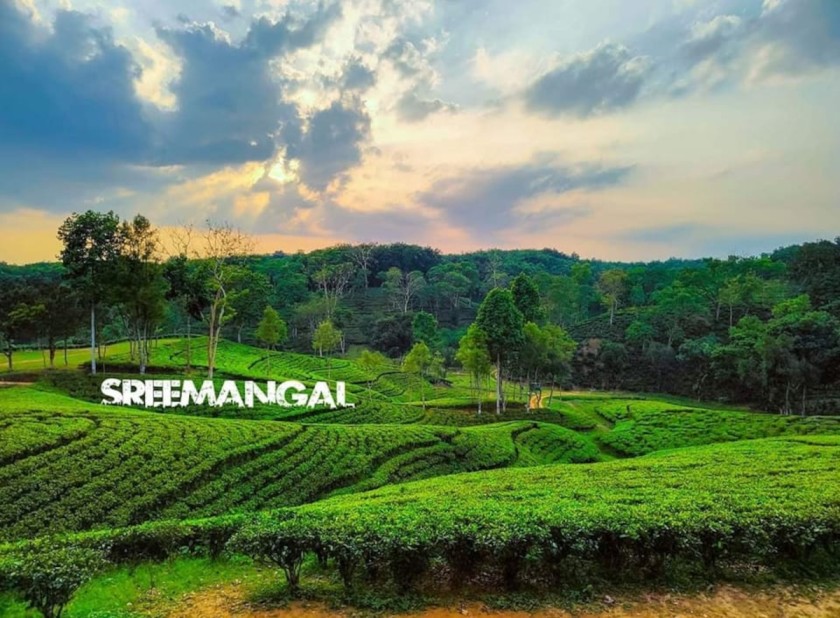Sreemangal isn’t just rolling tea gardens and Instagrammable resorts—it’s a place where colonial exploitation, tribal struggles, and modern tourism collide. Having lived here for 20 years, I’ll reveal what travel blogs won’t tell you—from the real conditions of tea workers to the hidden forests even locals avoid.
Why Sreemangal Matters
✔ Largest tea-producing region in Bangladesh (over 150 estates)
✔ Home to endangered tribes like the Khasia & Manipuri
✔ Secret wildlife spots beyond Lawachara National Park
✔ A tourism boom that’s displacing indigenous communities
The Dark Side of the Tea Gardens
1. The Workers’ Reality
- Wages: BDT 170/day (less than $2) for 8 hours of leaf-picking
- Living Conditions: One-room tin sheds with no electricity
- Child Labor: Still exists despite bans (kids help parents meet quotas)
2. The British Legacy That Never Left
- Plantation owners still live in colonial-era bungalows
- Workers call managers “Sahib”—a term unchanged since the 1800s
- Modern Exploitation: Most profits go to Dhaka-based corporations
Beyond the Tourist Trail: Real Sreemangal
1. Lawachara’s Hidden Truths
- Wildlife: Rare hoolock gibbons (often stressed by tourist noise)
- Restricted Zones: Where timber smuggling still happens
- Tribal Conflict: Khasia people fighting land grabs
2. The “Seven Layer Tea” Scam
- Invented in 2010 purely for tourism
- Original recipe? Just differently colored syrups
- Real local drink: Plain red tea with ginger
3. Resorts vs. Reality
- Luxury cottages built on former tribal land
- Pool water diverted from village supplies
- Nighttime security keeps out “unwanted locals”
Tribal Communities: Disappearing Cultures
1. The Khasia’s Fight for Survival
- Forced to work as tea laborers or tour guides
- Sacred forests now turned into “eco-parks”
- Last remaining traditional healers (facing arrest for “witchcraft”)
2. Manipuri Weavers’ Struggle
- Handlooms dying as cheap imports flood markets
- Young generation moving to cities for factory jobs
- Cultural festivals now performed only for tourists
Visitor’s Guide: Ethical Tourism Tips
Do’s
Stay in homestays (directly benefits families)
Buy from tribal markets (not resort gift shops)
Hire local guides (they know secret trails)
Don’ts
Don’t haggle over handicrafts (weavers earn barely anything)
Don’t feed wildlife (monkeys are becoming aggressive)
Don’t trespass into tribal villages without permission

Questions From Readers And Real Local Answers
1. “Are tea garden tours ethical?”
- Most just show staged “happy worker” performances
- Better option: BRAC’s fair-trade plantation visits
2. “Where’s the real wildlife spotting?”
- Remakri Jungle (no tourists, but need Khasia guides)
- Satgaon Lake at dawn (rare birds, no entry fee)
3. “Why do resorts block village roads?”
- To create “exclusive” access for paying guests
- Locals must take longer detours to reach markets
4. “Is tribal homestay safe?”
- Safer than resorts (no theft issues)
- Basic amenities (bucket baths, no AC)
- Real cultural exchange (if you respect their rules)
5. “What’s the most underrated spot?”
- Bhanugach Eco-Park (abandoned, eerie, beautiful)
- Magurchhara Tea Stall (oldest in Sreemangal, untouched by tourism)
Paradise or Paradox?
Sreemangal’s beauty hides deep inequalities. Visit responsibly—your tourism dollars can either exploit or empower.
Want the real experience? Find me at the Magurchhara tea stall—I’ll introduce you to the Sreemangal they don’t advertise.
Sreemangal: Uncensored FAQs (From a Tea Worker’s Son)
1. “Are the tea gardens really that picturesque?”
- Morning views: Yes, if you ignore the worker slums behind the bushes
- Best time for photos: Before 7AM when managers aren’t yelling at workers
- Hidden angle: Shoot from the factory roof (but you’ll need to bribe the guard ₹100)
2. “Can we interact with tea workers freely?”
- Officially: No (managers discourage it)
- Reality: Bring betel nuts or biscuits, they’ll share real stories
- Warning: Don’t photograph workers without permission – some believe it steals their soul
3. “Is seven-layer tea actually traditional?”
- Invented: 2010 by Nilkantha Tea Cabin for Instagram
- Secret recipe: Food coloring in syrup
- What locals drink: Strong red tea with salt (not sugar)
4. “Why do resorts have armed guards?”
- Official reason: “Protect guests from wildlife”
- Truth: Keep out tribal vendors and “suspicious locals”
- Recent incident: Guards beat up Khasia mushroom collectors last winter
5. “Where do the tribal people really live?”
- Tourist villages: Stage-managed for photos
- Real settlements: 3km behind Lawachara, no electricity
- Shocking fact: 1 toilet per 50 people in Manipuri colonies
6. “Can we visit the ‘secret’ forests?”
- Remakri Jungle: Need Khasia guide (₹500-1000)
- Danger zones: Where timber smugglers operate
- Local tip: Wear long sleeves – leeches vote communist here
7. “Why does tea taste different at source?”
- Fresh leaves: Boiled in aluminum pots (toxic but traditional)
- Secret ingredient: Sometimes cow dung ash as filter
- What’s missing: The artificial flavors added for export
8. “Are wildlife sightings staged?”
- Gibbons: Fed to stay near viewing areas
- Elephants: Chased into tourist zones during season
- Snakes: Defanged for photo ops (often die after)
9. “Where do the workers’ children study?”
- Factory schools: Only till 4th grade
- Hidden cost: Kids work after school to meet family quotas
- Dark truth: 60% drop out by age 12
10. “Why no photos inside tea factories?”
- Official reason: “Trade secrets”
- Real reason: Shows child laborers and rusted machinery
- Workaround: ₹200 tip to foreman gets you 5 minutes
11. “Is tribal weaving dying?”
- Last master weaver: Moni Manipuri (age 72)
- Problem: Synthetic saris cheaper to make
- Irony: Tourists buy Chinese-made “tribal” crafts in markets
12. “What’s the police checkpoint really for?”
- Daytime: “Tourist security”
- Nighttime: Collecting bribes from timber smugglers
- Local joke: It’s Sreemangal’s most profitable business
13. “Can we volunteer at tea gardens?”
- Reality check:
- ₹5000/day “donation” required
- You’ll just pose for PR photos
- Real work? They won’t let you near the plants
14. “Why do homestays have two menus?”
- Tourist menu: Overpriced “local cuisine”
- Real local food: Served after you befriend the family
- Must-try actual dish: Snail curry (not on any menu)
15. “What happens during off-season?”
- Workers starve: No work November-February
- Resorts fire staff: Rehire at lower wages later
- Tourist secret: Best time to see real Sreemangal
Final Thought About Sreemangal:
This ain’t Darjeeling- Sreemangal. Behind every cup of tea is blood, sweat and generations of exploitation. Come as a learner, not just a consumer. And for god’s sake – tip your tribal guide properly. Thanks for staying with One Light Journal Bangladesh.
